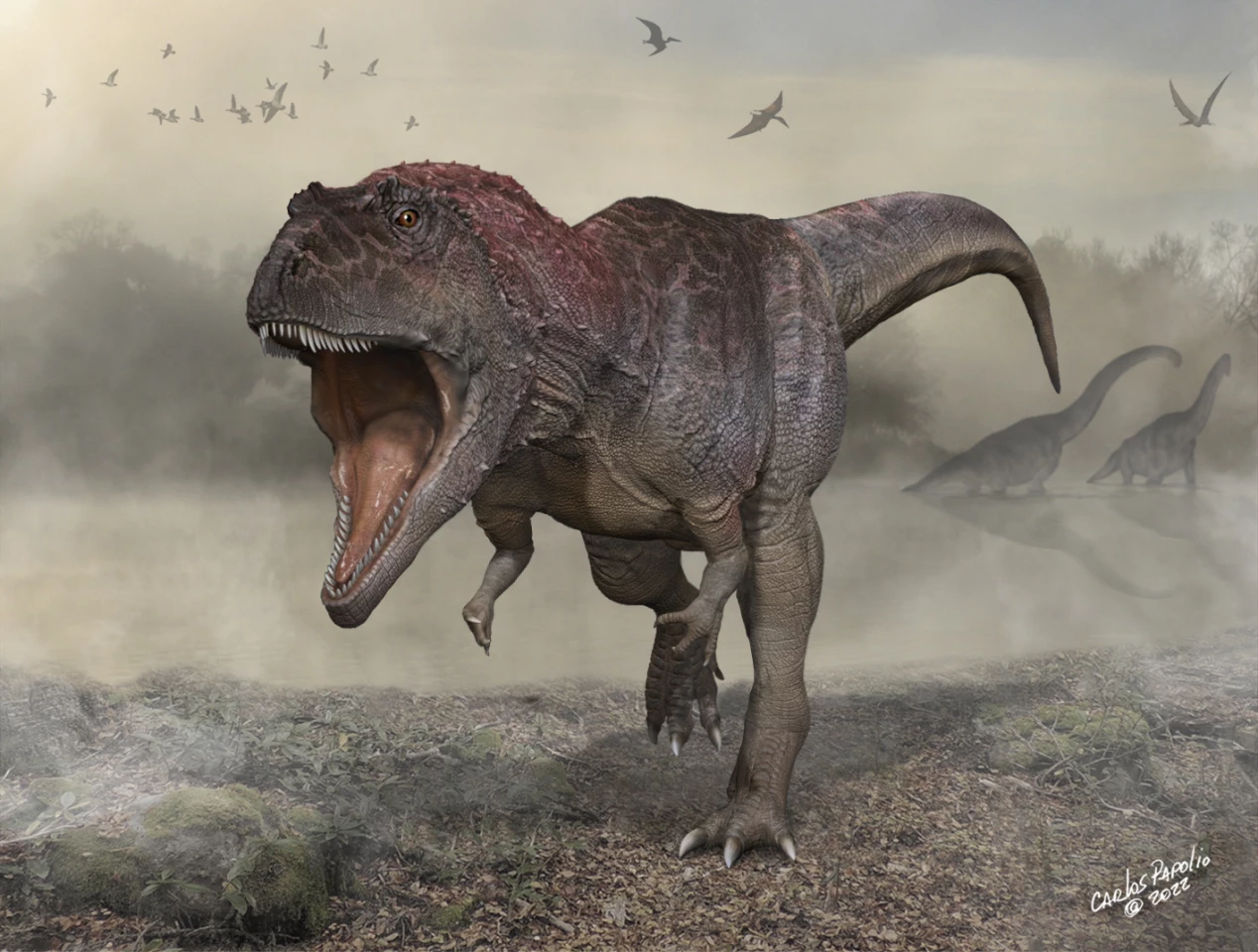Paleontologists have described a new species of giant carnivorous dinosaur from a fairly complete skeleton in Patagonia. The discovery could help shed new light on the mystery of why such powerful predators had almost comically tiny arms.
The new species has been named Meraxes gigas, with the first part referencing a dragon from George R. R. Martin's Song of Ice and Fire novels and the second part coming from the Greek word for “giant.” And giant it was – the dinosaur weighed over 4 tons, stood almost 11 m (36 ft) long and had a huge skull that measured 1.3 m (4.2 ft) long. That head was adorned with a series of crests, bumps, furrows and hornlets, giving it a fearsome appearance.
But one thing about this new species wasn’t quite so giant – its arms. Like many carnivorous theropods, its forelimbs were disproportionately tiny, measuring less than half the length of its femur. That means Meraxes couldn’t reach its mouth, making it unlikely the arms were used for anything related to feeding. But if that’s the case, what did it use them for?
That’s a question that paleontologists have pondered for decades, with many hypothesizing that they’re vestigial limbs – evolutionary leftovers that shrink over time as the animals no longer need them. But the newly discovered skeleton has some features that suggest otherwise.

“The fossil of M. gigas shows never seen before, complete regions of the skeleton, like the arms and legs that helped us to understand some evolutionary trends and the anatomy of Carcharodontosaurids – the group that M. gigas belongs to,” said Juan Canale, project lead on the study. “I’m convinced that those proportionally tiny arms had some sort of function. The skeleton shows large muscle insertions and fully developed pectoral girdles, so the arm had strong muscles.”
The researchers propose a few other possible uses for these arms, like helping the huge animal get up off the ground after a rest, or to hold onto its partner while mating. That’s in line with suggestions from other scientists in the past, but without being able to observe behavior, we may never know the answer for sure.
Whatever that function was, it must have been important, because the new study shows that tiny forelimbs evolved multiple times in at least three distinct lineages – Carcharodontosaurids like Meraxes, abelisaurids like Carnotaurus, and tyrannosaurids like … well, Tyrannosaurus. And these aren’t direct ancestors of each other either. Meraxes lived about 95 million years ago, becoming extinct some 20 million years before T-rex evolved.
We may not have any definitive answers, but at least we have a scary new villain for any future Jurassic World movies.
The research was published in the journal Current Biology.





